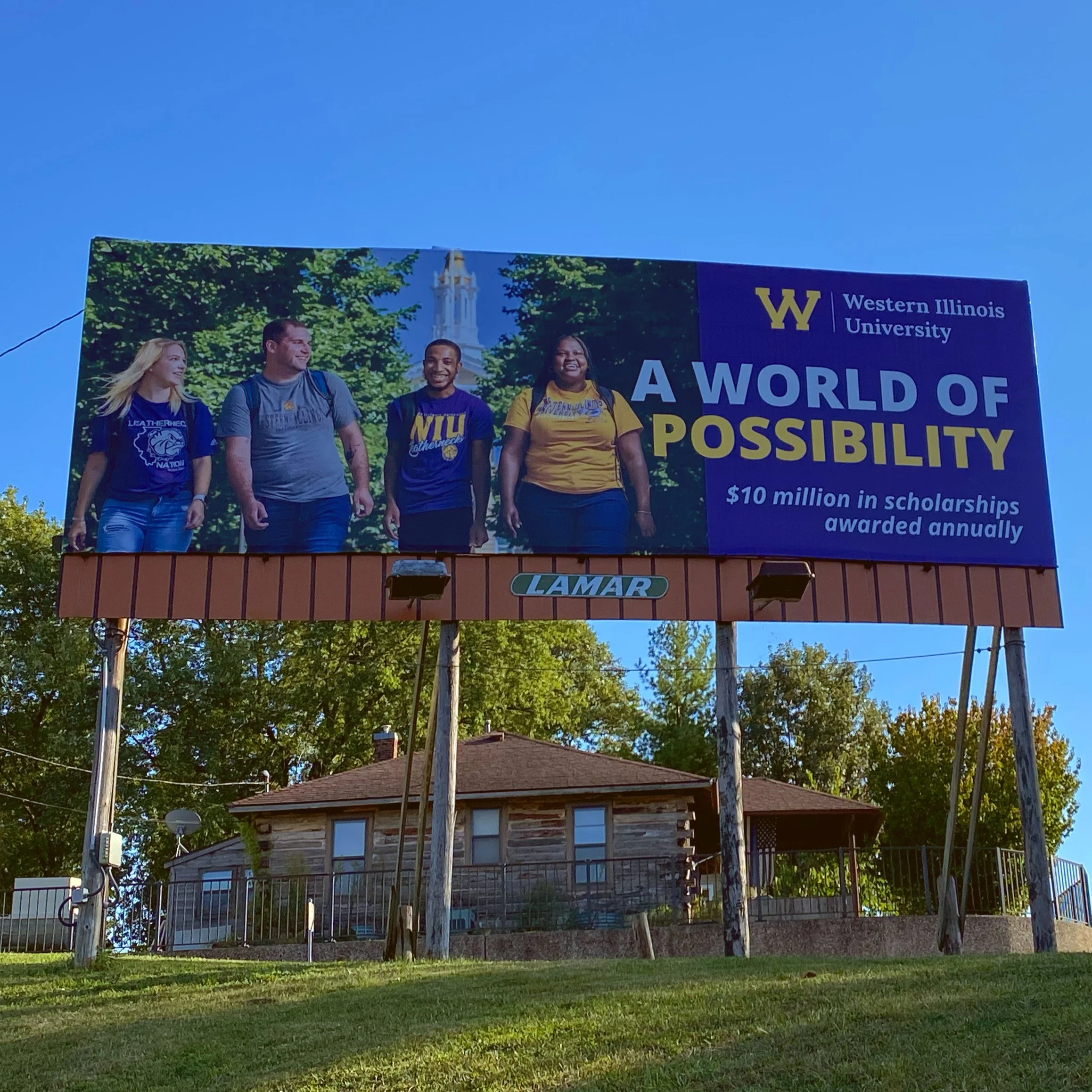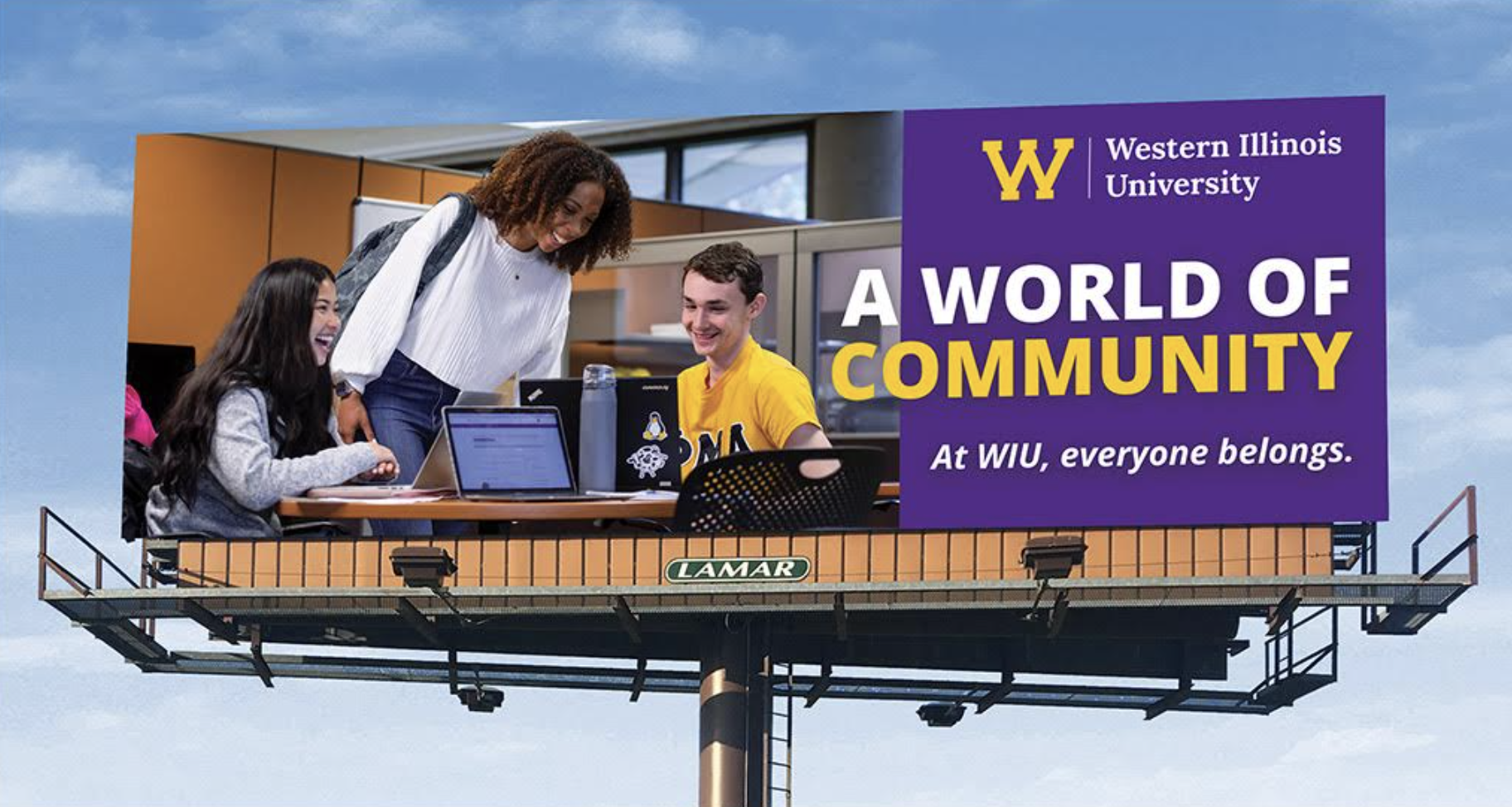
Demographic + Psychographic Market Research
The demographic and psychographic student research project stands out as one of my proudest accomplishments in my professional career. I'm confident that the data we've gathered will yield a profound influence in the years ahead, empowering professionals to make informed, data-driven decisions.
-
While at WIU, I adeptly managed an array of vendor relationships, spanning from prominent digital marketing agencies to numerous billboard and broadcast vendors and representatives, creative agencies, and third-party print shops.
My responsibilities encompassed the entire vendor engagement lifecycle. This included formulating initial Request for Proposals (RFPs), collaborating closely with cross-functional teams in Purchasing, Procurement, and Business Offices, meticulously assessing vendor proposals, finalizing contracts, and nurturing and overseeing these relationships to meet a diverse range of organizational needs.
-
In collaboration with the University's digital marketing agency, I played an integral role in gathering both qualitative and quantitative data throughout the Fall 2020 academic semester. This involved not only conducting but also overseeing a series of four workshops, followed by a comprehensive survey administered to the undergraduate student body.
Additionally, I closely collaborated with admissions stakeholders to compile and analyze historical cycles of student data. This data was pivotal in efforts to gain a deep understanding of the demographic household clusters that hold significance in the context of the University's enrollment pipeline.
-
The collaboration with the digital marketing agency was instrumental in the development of comprehensive psychographic student profiles. These profiles provided invaluable insights into the beliefs, attitudes, motivations, and emotional drivers of WIU students. By integrating this psychographic data with the demographic information, we gained the ability to make more accurate predictions about what resonates most effectively with each student. This enabled us to strategically segment them into three distinct audience categories.
The collection of five digital ads showcased below serves as a prime illustration of the diverse creative and messaging strategies that were tailored to prospective students at the inquiry stage of the enrollment funnel. Each ad aligns with one of the three segmented audience categories, ensuring a targeted and resonant approach.
-
Armed with the wealth of data, I orchestrated the delivery of a diverse array of messages tailored to prospective students, aligning with their unique motivating factors. The segmentation of data was not only instrumental in shaping messaging and creative assets across both traditional and digital channels but also equipped the university with the ability to directly address the key attractors and drivers of prospective students.
This data-driven approach revolutionized the decision-making process for our creative and marketing teams. It enabled us to make highly precise, data-informed choices pertaining to the placement and messaging of digital media and traditional marketing efforts. By optimizing marketing plans and budgets in this manner, we achieved maximum ROI, driving impactful outcomes while making the most of available resources.
In early 2021 and subsequently in the following year, I undertook a strategic initiative to cross-reference student audience maps with the University's donor maps. This meticulous analysis allowed me to precisely identify strategic locations for traditional marketing efforts. These locations included placements such as billboards and Uber car wraps, chosen to maximize impact and deliver the highest Return on Investment (ROI). Our decision-making was grounded in a robust foundation of data, incorporating insights from student demographics, donor patterns, and historical performance.






